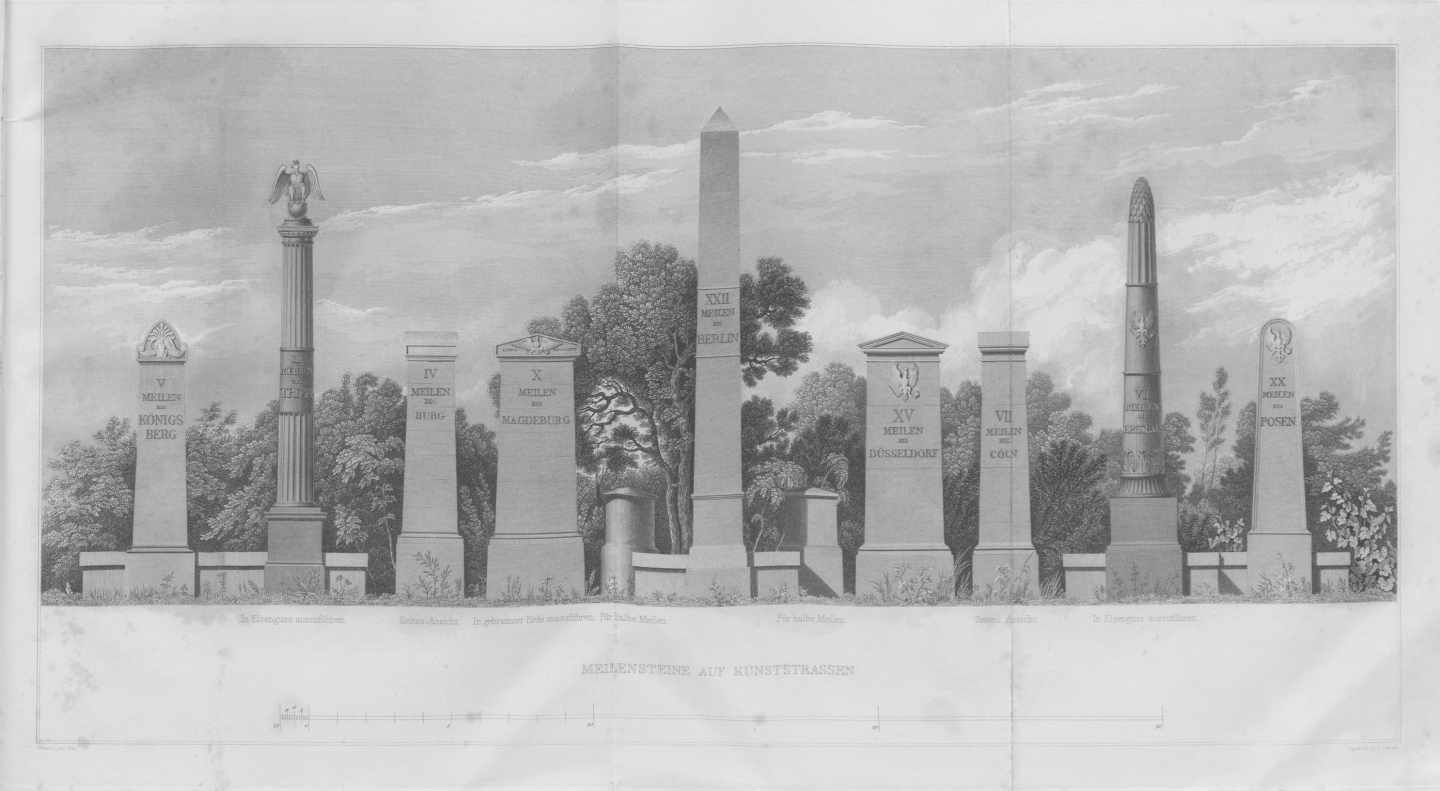Schinkel’s Berlin
Jules Schoonman

For the second part of his life, Karl Friedrich Schinkel (1781-1841) worked for the Ober-Bau-Deputation, the Prussian state’s chief building authority. Although his work as administrator is sometimes seen as limiting his creative freedom, the opposite might be true. Notwithstanding the heavy workload Schinkel experienced, from his appointment in 1810 until his directorship in 1830, his position allowed him to influence Prussia’s building culture by proposing alterations to submitted designs, prescribing norms for different building types, and filling new positions with protégés. In some of his own designs, like the Bauakademie, it gave him unprecedented control over the building’s execution. Moving beyond the often predominating questions of authorship, the lecture contextualizes Schinkel’s work at the Ober-Bau-Deputation and looks at underlying processes and aspirations. In addition, through the display of a series of state-published pattern books held by TU Delft Library, Schinkel’s contribution to early Prussian industrialization is shown.
The Berlage Sessions is a thematic seven-part seminar series entitled “Architecture in Civic Service,” examines the administrative role architects played in designing nineteenth-century Barcelona, Berlin, and Vienna; postwar Amsterdam and Stockholm; and contemporary Flanders and Bristol, from streetlights and building facades to infrastructures and landscapes. This spring semester, speakers include George Ferguson, Francesc Magrinyà Torner, Helena Mattsson, Jules Schoonman, Werner Michael Schwarz, Peter Swinnen, and Linda Vlassenrood.
Jules Schoonman is an architect and researcher working as a policy advisor at the Delft University of Technology, where he is responsible for the presentation of academic heritage. He is also a doctoral candidate at the University of Wuppertal, under the School of Architecture and Building Engineering’s Chair of Architecture History Theory. His doctoral research provides the first comprehensive overview and critical assessment of Max Raphael’s writings on architecture, at the centre of which is the 1930 publication on the temples of Paestum entitled Der Dorische Tempel.